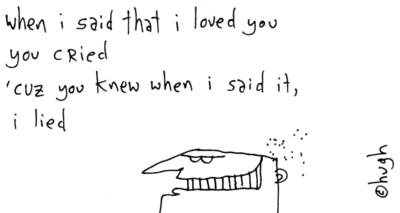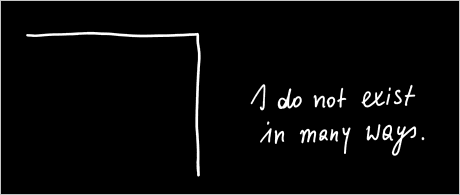Responsibility for free
September 26th, 2007A local advertisement company is currently running a campaign where they print quotes on big posters at public places (Zeit für ein Zitat 2007). One the quotes repeatedly caught my attention on my way home:
Freedom’s other name is responsibility.
— Thomas Mann
Well done, Thomas. And thanks for the entertainment. It was a two corner walk until I saw the lie within.
P.S.: The original German quote is: Der Freiheit anderer Name heißt Verantwortung. I could not find any other reference of it. So, who knows, maybe Thomas Mann never said or wrote it anyway.
Beginnings and endings
September 25th, 2007A friend just told me a wonderful story of today’s after lunch coffee klatch. They were cutting apart a longish piece of pastry (a Nußstangerl) and had a little talking about who prefers ends and who likes middle parts more. There she said she didn’t like ends, she would prefer beginnings.
Go ahead!
Ecological recommendations
September 23rd, 2007When ecologists advertise their recommendations to save the world this often appears to me like young lovers who are enjoying a diverse sex life but who rarely practice safe sex.
And they think that if they used condoms more often the chance of catching STDs is decreased. In fact, it is (if we trust their numbers), nevertheless, they are probably already spreading their disease.
Love and lies
September 22nd, 2007
When I said that I loved you
you cried
‘cuz you knew when I said it,
I lied
Multitudes of the nonexisting (dragons)
September 21st, 2007Everyone knows that dragons don’t exist. But while this simplistic formulation may satisfy the layman, it does not suffice for the scientific mind. The School of Higher Neantical Nillity is in fact wholly unconcerned with what does exist. Indeed, the banality of existence has been so amply demonstrated, there is no need for us to discuss it any further here. The brilliant Cerebron, attacking the problem analytically, discovered three distinct kinds of dragon: the mythical, the chimerical, and the purely hypothetical. They were all, one might say, nonexistent, but each nonexisted in an entirely different way. And then there were the imaginary dragons, and the a-, anti- and minus-dragons (colloquially termed nots, noughts and oughtn’ts by the experts), the minuses being the most interesting on account of the well-known dracological paradox: when two minuses hypercontiguate (an operation in the algebra of dragons corresponding roughly to simple multiplication), the product is 0.6 dragon, a real nonplusser. Bitter controversy raged among the experts on the question of whether, as half of them claimed, this fractional beast began from the head down or, as the other half maintained, from the tail up.
— Stanislaw Lem: The Cyberiad. Harvest Book 2002 (original Polish edition 1967). Page 57, chapter “The Third Sally Or The Dragons Of Probability”.


